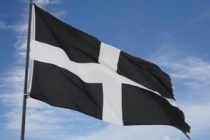Carn Brea
The Carn Brea hill has site encircling stone walls constructed about six thousand years ago. A series of large stone walls encircle the central and eastern tors of the hill, with a double set of ramparts built across the slopes which links both and encloses the area between them. Excavations in point to them dating to the Early Neolithic period of between 4,000 and 3,500 BC. Archaeological digs in the interior of the eastern enclosure uncovered remains of rectangular lean-to houses against the internal face of the ramparts. Flint arrow heads found around the main entrance to the enclosure indicated that the site had been attacked by warriors with evidence that the houses had been burned down, pointing to a period of tribal warfare.
The hilltop shows the site being occupied occupation by hunter gatherers up to the present day. Bronze Age tools and weapons have been found. During the Iron Age the ramparts, were repaired and re-used, and a number round houses between the two summits can be seen. Roman period finds have been made on the hill and after the Norman Conquest. Carn Brea was part of the Tehidy Estate and a castle built on the eastern summit. Partial rebuilding was undertaken during the 18th and 19th centuries with the building in current use. There is a well on the northern slopes beneath the castle which is known as the Giants' Well which is the source of local folktales involving a fight between giants.
Carn Brea is owned by Kerrier District Council with a small car park on the saddle area which can be reached via a lane from the village of Carnkie, south of Redruth.
Celtic nation:
- Cornwall
Itinerary:
- Cornwall north
Place type:
- Ancient site





